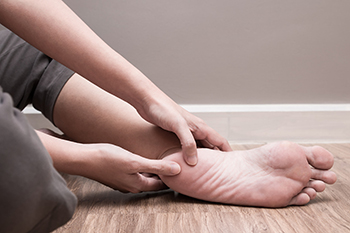
A broken ankle can be a distressing and painful experience, necessitating prompt attention for proper healing. The primary indicators of an ankle fracture are profound pain, swelling, and bruising at the site of injury. Movement becomes a formidable challenge as the affected ankle tends to be extremely tender and sensitive. Weight-bearing on the injured foot becomes an arduous task, often resulting in significant discomfort. Deformity or misalignment of the ankle may be apparent, signaling a severe fracture. The pain typically intensifies with any attempt at movement or pressure on the broken ankle. It is not uncommon for individuals to report a distinct cracking sound at the time of injury. Recognizing these distinctive symptoms is essential in seeking immediate medical attention, allowing for an accurate diagnosis. If you believe you have broken your ankle, it is suggested that you immediately consult a podiatrist who can determine the best course of treatment.
Broken ankles need immediate treatment. If you are seeking treatment, contact one of our podiatrists from Canonsburg Podiatry Associates. Our doctors can provide the care you need to keep you pain-free and on your feet.
Broken Ankles
A broken ankle is experienced when a person fractures their tibia or fibula in the lower leg and ankle area. Both of these bones are attached at the bottom of the leg and combine to form what we know to be our ankle.
When a physician is referring to a break of the ankle, he or she is usually referring to a break in the area where the tibia and fibula are joined to create our ankle joint. Ankles are more prone to fractures because the ankle is an area that suffers a lot of pressure and stress. There are some obvious signs when a person experiences a fractured ankle, and the following symptoms may be present.
Symptoms of a Fractured Ankle
- Excessive pain when the area is touched or when any pressure is placed on the ankle
- Swelling around the area
- Bruising of the area
- Area appears to be deformed
If you suspect an ankle fracture, it is recommended to seek treatment as soon as possible. The sooner you have your podiatrist diagnose the fracture, the quicker you’ll be on the way towards recovery.
If you have any questions, please feel free to contact our office located in Canonsburg and McMurray, PA . We offer the newest diagnostic and treatment technologies for all your foot care needs.









